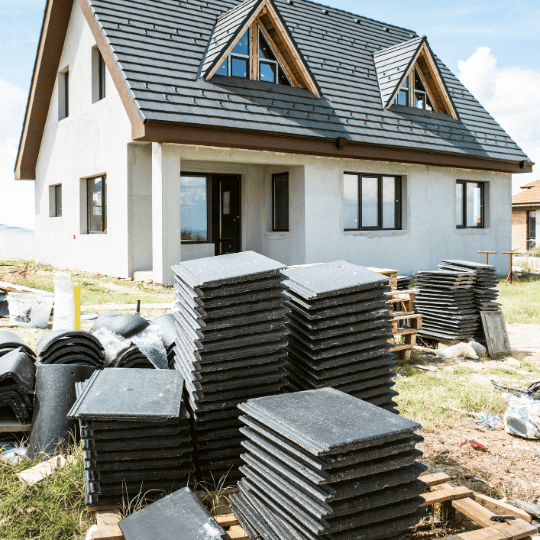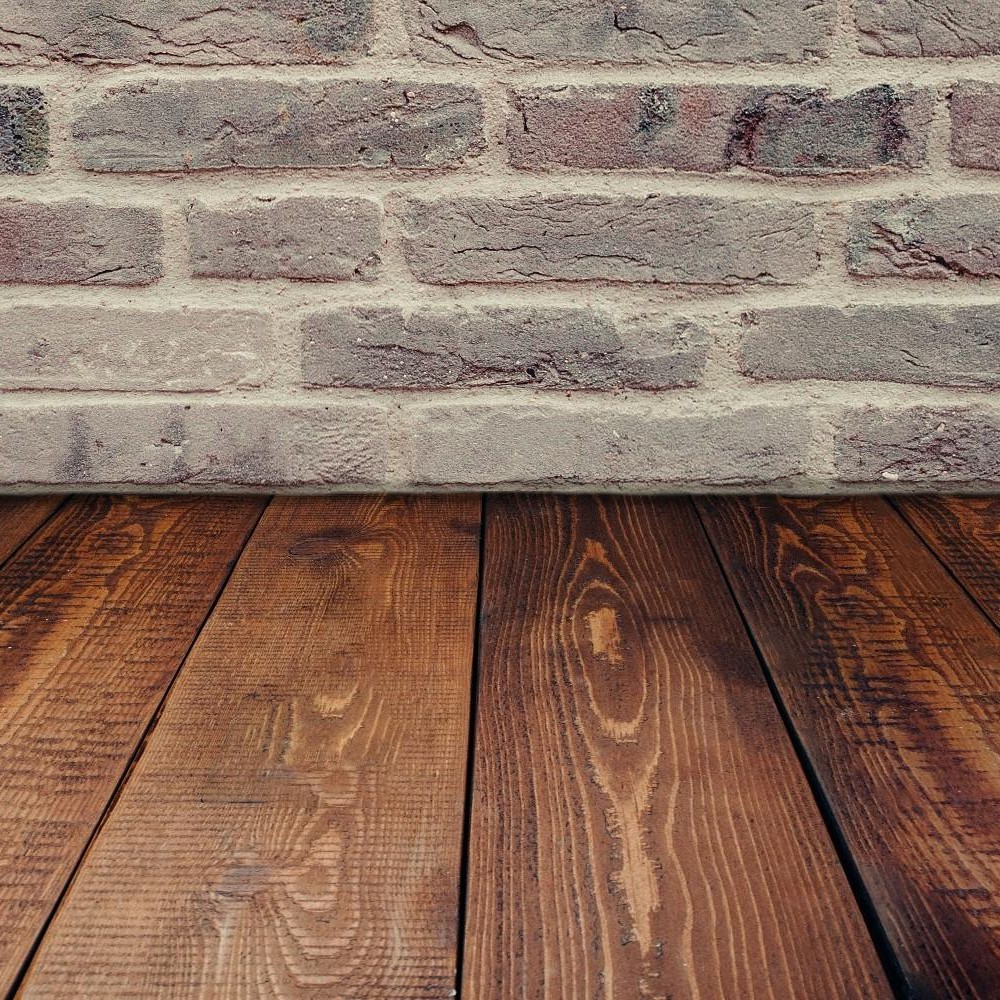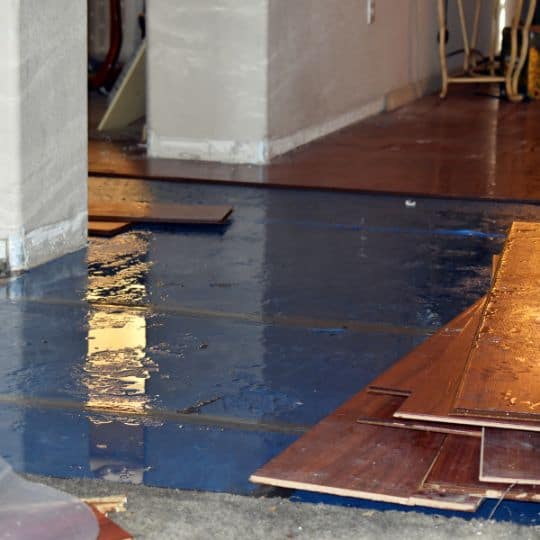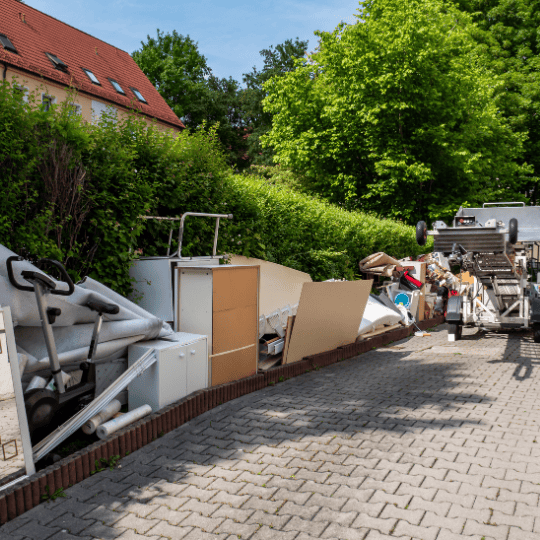
The Art of Renovation Clean-up and Disposal
Table of Contents
Amidst the joy of creating your dream space, there’s one important aspect that cannot be overlooked: Renovation clean-up and disposal. Neglecting this crucial step can turn your dream renovation into a messy nightmare.
Renovating your home is an exciting project. Whether you’re revamping your kitchen, transforming your bathroom or giving your entire house a facelift the end result is always worth the effort. We will explore the art of renovation clean-up and disposal to help you seamlessly complete your home transformation project.
The Importance of Proper Clean-up and Disposal
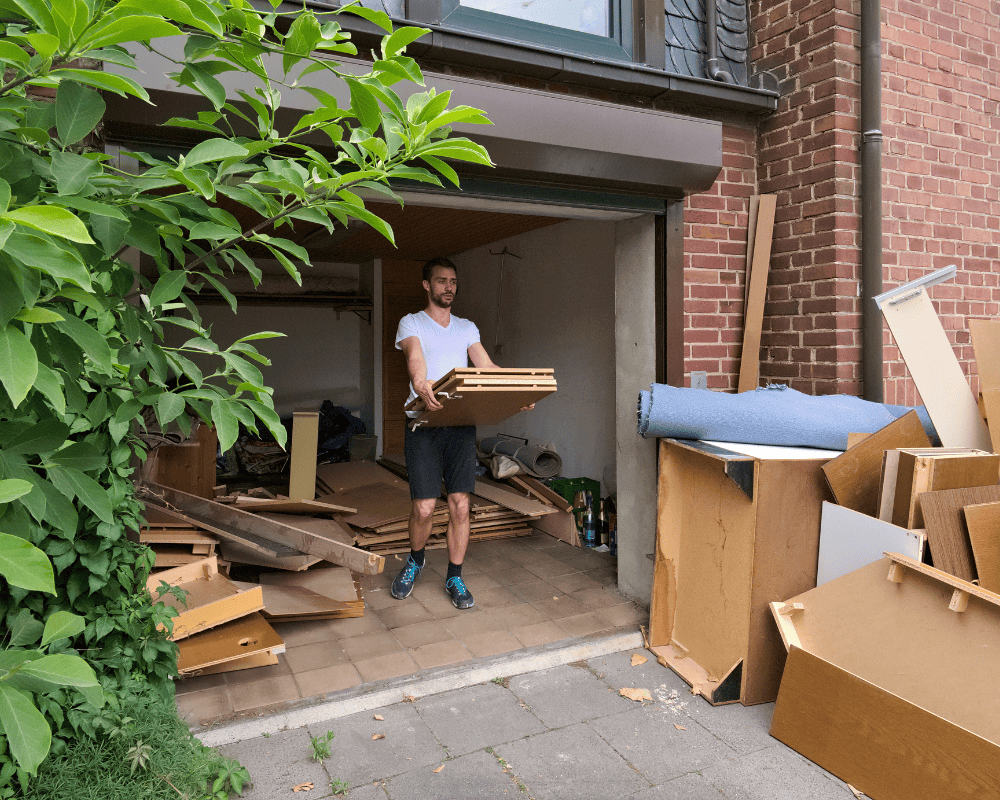
Renovations generate a significant amount of waste. This can include debris from demolition, excess building materials and discarded fixtures and appliances. Failing to handle this waste properly can lead to several problems. Not only does proper renovation clean-up ensure the safety and well-being of those living in the space, but it also has significant environmental implications.
Many renovation materials such as wood, drywall and tiles can contain hazardous substances or chemicals that can be harmful to both people and the environment if not handled correctly. This is especially important for individuals with allergies or respiratory conditions as lingering particles can exacerbate their symptoms. By disposing of these materials according to local waste regulations, we can prevent them from ending up in landfills or contaminating water sources. A tidy space creates a sense of calm and orderliness which has been proven to positively impact mental well-being.
Safety Hazards

It is easy to overlook the potential dangers that lie within these construction materials. Broken glass, sharp objects, metal edges, construction dust and exposed nails can pose a serious threat to anyone attempting to remove or dispose of them without proper precautions. While wearing gloves might be an obvious choice, it’s also crucial to use sturdy boots with reinforced toes and thick soles as protection against potential injuries.
Another often overlooked safety hazard during renovation clean-up is dust inhalation. Construction work stirs up significant amounts of dust containing various harmful particles such as silica, asbestos and lead. Breathing in this toxic air has severe health consequences that extend beyond respiratory issues. Long-term exposure to hazardous waste and silica dust during construction process has been linked to chronic lung diseases like silicosis and even lung cancer. Hence, it is imperative for individuals involved to wear high-quality respiratory protective equipment such as masks or respirators specifically designed for filtering out these hazardous substances. A small investment in safety will yield tremendous returns when it comes to preserving your health and well-being in the long run.
Environmental Impact
When considering the environmental impact of construction projects the focus is generally on energy-efficient materials or green building practices. The improper handling of waste during renovation clean-up can have severe consequences and potential hazards for the environment. Construction debris, such as broken tiles, drywall or old appliances, can release harmful pollutants into the air and soil if not disposed of properly.
To tackle this issue effectively, construction contractors and homeowners should consider alternatives to conventional waste management methods. By giving special attention to the scope of work and recycling construction debris whenever possible is one option that should be embraced more widely. Many recyclers specialize in processing asphalt shingles or concrete rubble from demolition sites into new usable materials like road aggregate or base course material for new construction projects. By diverting waste from landfills through recycling efforts like these, we not only reduce our impact on the environment but also promote a circular economy where resources are reused rather than discarded after just one use. Ultimately, being conscious of the renovation cleaning requirements and disposal practices required is crucial if we wish to minimize our environmental footprint in this industry.
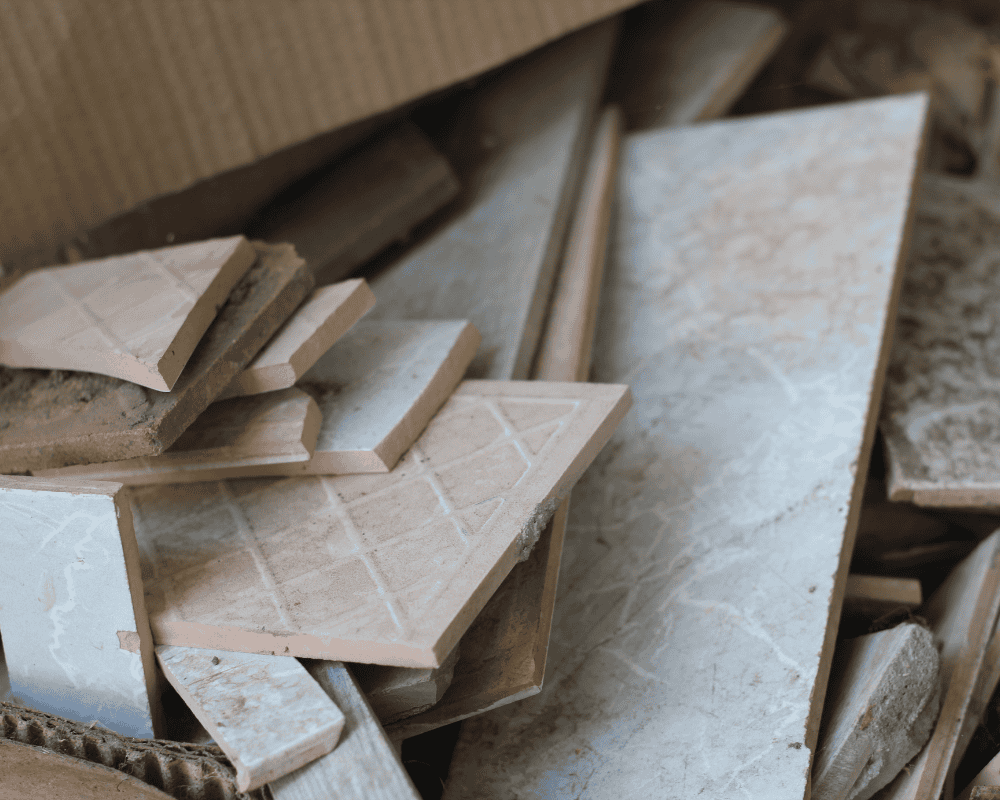


Legal Consequences
Many homeowners may not be aware that high standards are expected, also laws and regulations in place when it comes to renovation clean-up disposing of waste. Improper disposal methods can result in fines or even legal action.
One important consideration is the proper sorting of materials. Different types of waste, such as hazardous materials or construction debris require specific disposal methods that adhere to local regulations. Failure to comply with these safe environment guidelines can result in penalties imposed by governing bodies or environmental agencies.
Ensuring that the construction job waste is disposed of at appropriate locations is crucial. Dumping debris in unauthorized areas can harm the environment and carry hefty fines. Researching local recycling centres or hiring professional post-renovation cleaning services who specialize in clean-up and disposal can help avoid these legal pitfalls while also contributing to sustainable practices.
Delays in Completion
Renovation clean-up and disposal is a crucial aspect of any construction project, delays in completion can often be attributed to the disregard or underestimation of this deep cleaning process. At the final phase of work, it is essential that builders and contractors allocate sufficient time to the cleaning crew and resources to ensure a smooth meticulous cleaning operation.
One key factor contributing to delays in completion is the failure to properly plan for construction clean-up services and disposal at the outset of a project. Many contractors assume that this step can easily be completed within a short timeframe, underestimating the amount of large debris and waste generated during relevant work carried out.
The Renovation Clean-up Process:
Inadequate co-ordination between different general contractors teams involved in the renovation process can also contribute to delays. Clean-up construction crews are often brought in after all other trades have finished their work. By integrating final cleaning crews into the overall project timeline from an early stage, builders can ensure that necessary resources are allocated throughout each phase including dedicated time for thorough debris removal and proper disposal. It is essential to plan the final step of renovation clean-up and disposal meticulously.
Preparation
Start by designating an area for waste collection. This area should be easily accessible to your renovation team and away from the main work area. You’ll also need suitable containers and bags for different types of waste.
One important aspect of preparation is creating a detailed cleaning plan that takes into account the specific areas of the property owners house that has undergone renovation and any specialized equipment or products needed for this rough cleaning. This step helps save time and ensures that all post-renovation debris and dust is tackled effectively.
An important part of the preparation process is ensuring safety during clean-up. Renovation projects often involve hazardous materials such as lead paint or asbestos which require special disposal procedures to avoid health risks. It’s essential to research local guidelines regarding the disposal of construction waste and consult professionals if necessary. Additionally, wearing protective clothing like gloves, goggles and masks can protect you from harmful substances while cleaning up.
The attention paid to planning out your cleaning strategy and following safety protocols will not only make your life easier but also contribute to maintaining a healthy environment post-renovation.
Deconstruction and Demolition
Deconstruction and demolition are necessary steps in the renovation clean-up and disposal process that lay the foundation for something new. These processes generate a substantial amount of waste that needs to be properly managed and disposed of. Hiring professionals who specialize in renovation clean-up ensures that every bit of debris and a lot of dust is removed efficiently and responsibly. From carefully organizing recyclables to safely disposing of hazardous materials, they take care of every detail while making sure your space is left spotless.
Renovation clean-up services offer an added level of convenience by providing the right tools and tailored solutions based on your specific needs. Whether you need help with routine debris removal or assistance with larger-scale projects, these experts have the knowledge, skills, and equipment required to get the job done right. Keeping a separate container for recyclable materials, like wood, metal, and glass is advised.

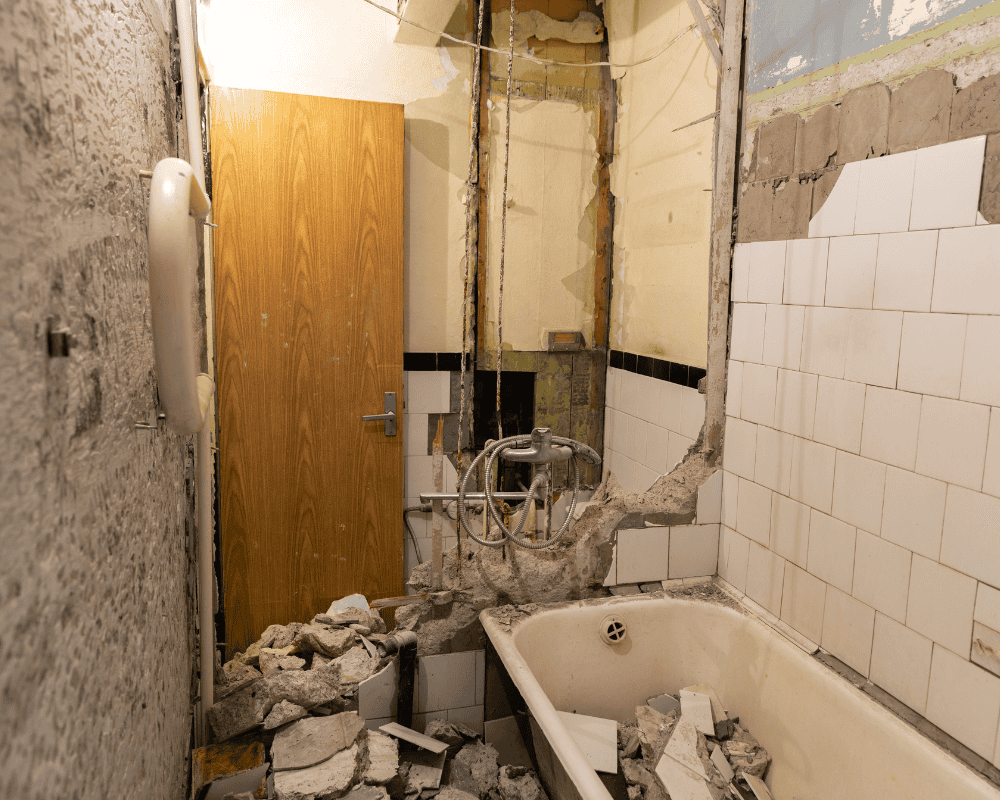

Sorting and Categorizing
As you sift through the remnants of old fixtures and debris during the renovation clean-up, sorting and categorizing become crucial skills to efficiently manage waste. This process goes beyond simply separating trash from recyclables. It involves careful consideration of how items can be repurposed or donated creating opportunities for others to benefit from your discarded belongings.
As we categorize materials into different piles – recyclables, reusable items, donations – we begin to notice patterns in our consumption habits. This exercise encourages us to reflect on our consumerism while opening doors for creative solutions.
By actively considering where each item belongs instead of mindlessly throwing everything away, we become mindful consumers who prioritize reducing waste and recycling whenever possible. It is also crucial to sort renovation waste into different categories such as recyclables, general and hazardous materials. This step streamlines the disposal process.
Hazardous Materials
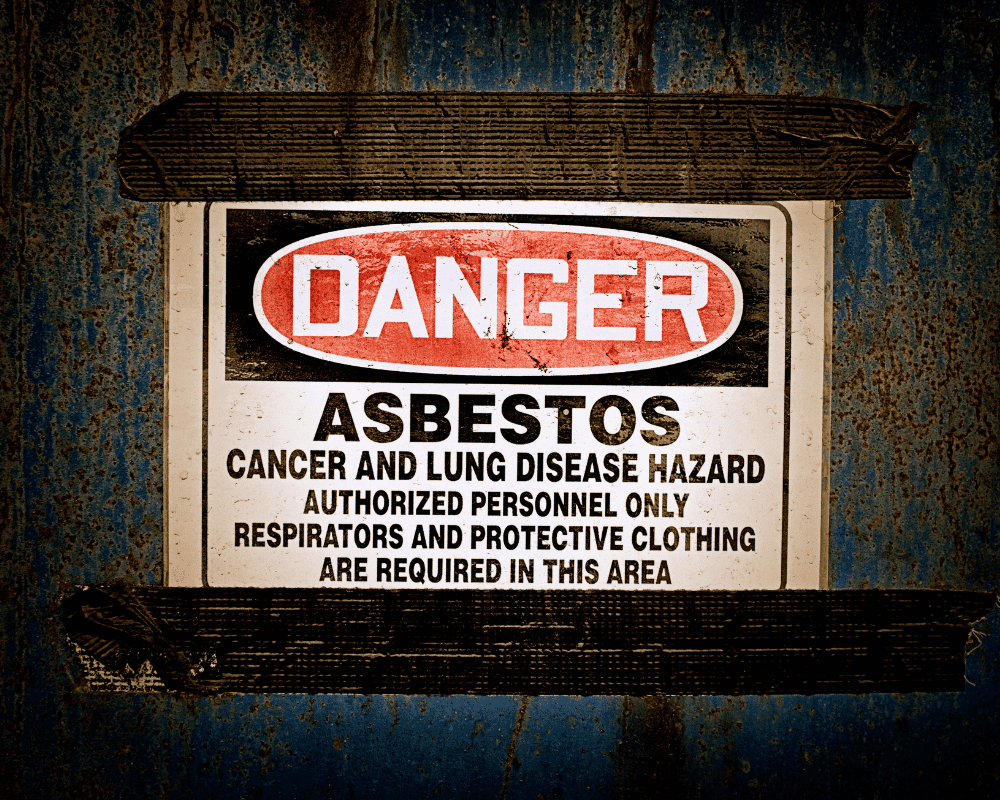
Renovation clean-up and disposal can often involve dealing with hazardous materials. These materials pose a significant risk to human health and the environment if not handled properly. One common hazardous material found during renovation projects is lead-based paint. Although banned in many countries, it can still be found in older buildings and poses a serious threat especially to young children who may ingest lead dust.
Another hazardous material commonly encountered during renovation clean-up is asbestos. This mineral was widely used in construction materials until its health hazards were discovered. Asbestos fibres are known to cause lung diseases such as mesothelioma and asbestosis when inhaled. Proper handling, removal and disposal of asbestos-containing materials are essential to prevent workers and occupants from being exposed to these harmful fibres.
If your renovation involves materials like asbestos or lead-based paint, consult a professional for safe removal and disposal. These substances are highly regulated due to their health risks.
Regular Clean-up
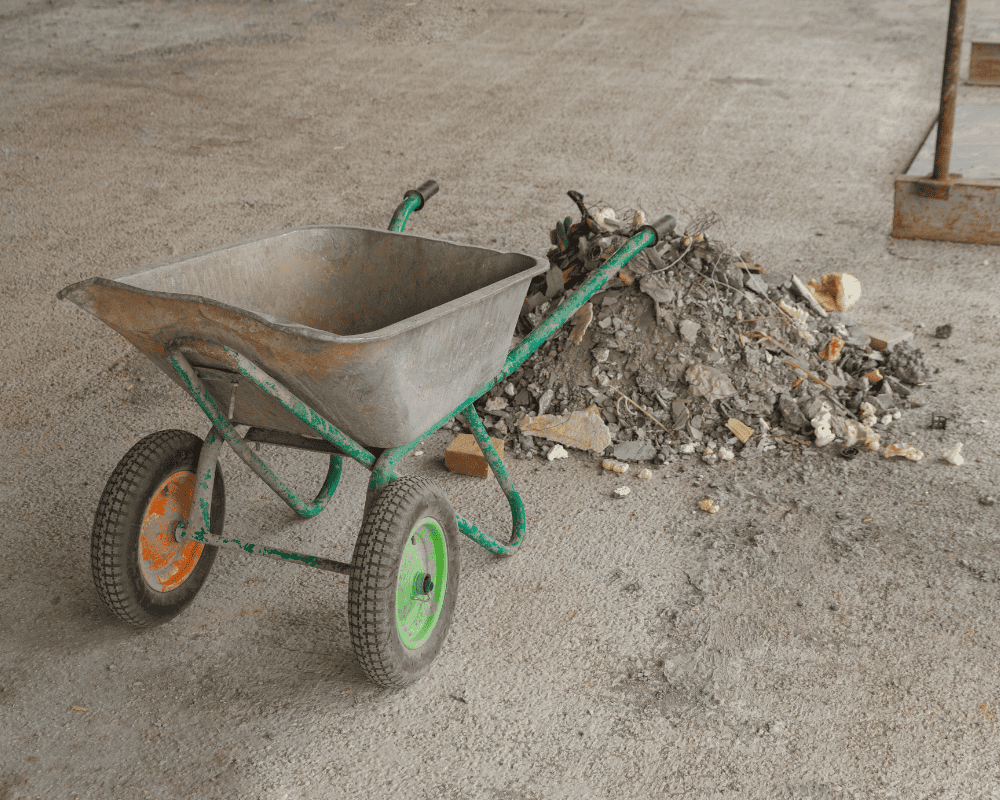
Maintain a clean work area throughout the renovation process. Regularly remove debris to minimize safety risks and keep your project on track. Regular clean-up also has psychological advantages. Seeing a clean and organized space after a day of hard work can be incredibly rewarding and boost your motivation for further renovations.
The Renovation Waste Disposal Process:

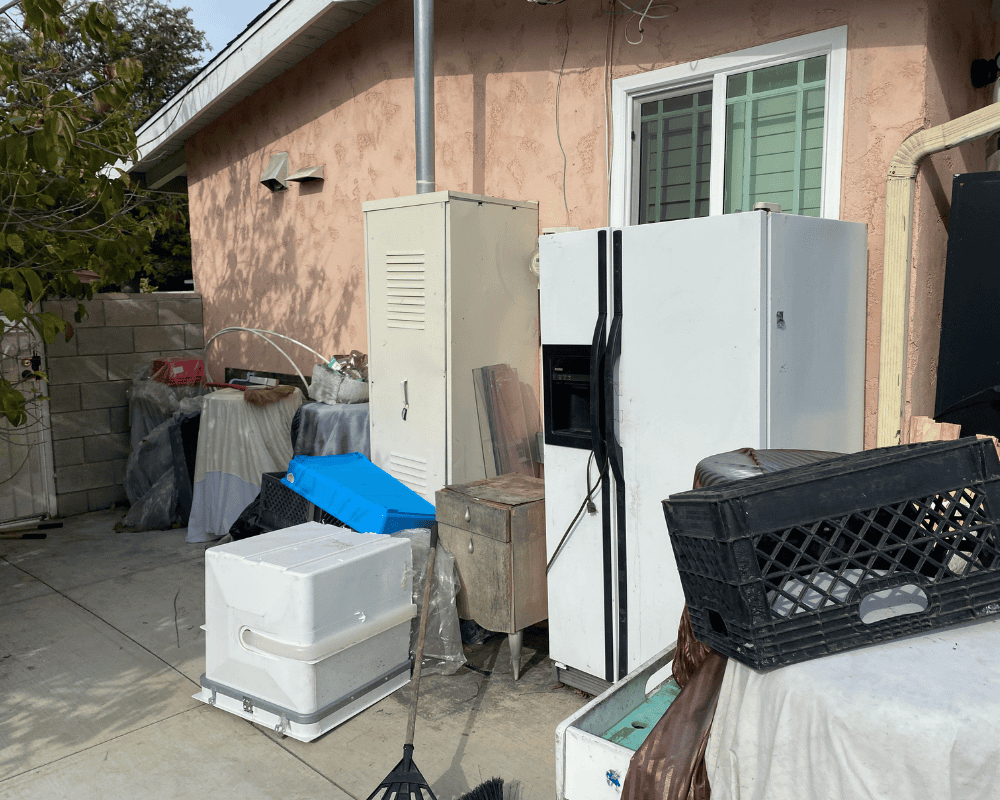

Local Regulations
Familiarize yourself with local regulations and requirements regarding waste disposal. This includes understanding which items can be recycled, which can be thrown away and which must be disposed of separately. Many homeowners find themselves facing steep fines or legal complications due to improper waste disposal during renovations. Each locality has specific guidelines in place that determine how and where construction debris should be disposed of. Understanding these regulations not only ensures a smooth renovation clean-up process but also demonstrates your commitment to environmental sustainability.
Local regulations vary widely, some areas require homeowners to obtain permits for large-scale renovations, including provisions for proper waste management. Additionally, there may be restrictions on what types of materials can be disposed of in regular trash bins or landfill sites. To navigate these regulations effectively, consider consulting with local experts or waste management professionals who can provide guidance on responsible disposal options that comply with local laws.
Following local regulations isn’t just about avoiding penalties, it also promotes a healthier environment by reducing the impact of construction debris on landfills and eco-systems. Many communities have alternative solutions for recycling construction materials such as concrete, wood, and metal that would otherwise end up in landfills.
Recycling
Traditionally, during renovation clean-ups, all debris would be transported to landfills. With growing environmental consciousness and stricter regulations on waste management recycling has become an increasingly viable option. By sorting and separating materials like wood, concrete, metal, glass and plastic upfront, we can re-route these resources to recycling facilities instead of simply discarding them. This allows for the repurposing of materials in other construction projects or even in unique artistic endeavours. The potential for creativity within the realm of recycled building materials knows no bounds.
Integrating recycling into renovation clean-ups presents an opportunity for cost savings and reduced ecological footprint. Many cities now offer recycling programs that specifically cater to construction waste by providing drop-off locations or pick-up services. Choosing these alternatives not only prevents unnecessary landfill usage but can also save money through reduced disposal fees or potential tax incentives promoting sustainable practices. It is a step towards transforming our approach to construction waste from wastefulness to resourcefulness – where discarded materials become valuable commodities.
Donation
Consider donating items that are in good condition but no longer fit your design plans. This is a sustainable way to reduce waste and benefit your community.
By donating usable furniture or appliances to local charities or non profit organizations, you are not only reducing waste but also giving those less fortunate an opportunity to improve their quality of life. These donations often generate revenue for charities through their resale stores or online platforms. This income helps fund programs that directly benefit the most vulnerable members of our society – a win-win situation for everyone involved. Remember that donation isn’t just about getting rid of unwanted items—it’s about creating positive change in peoples’ lives through simple acts of kindness.
Waste Removal Services
For large-scale renovations, you might need to hire a professional waste removal service. They can efficiently and responsibly handle the disposal of all types of waste generated during your project.
One fresh perspective to consider when it comes to waste removal services is their commitment to eco-friendly practices. Many of these companies prioritize recycling and proper disposal methods, reducing the impact on the environment. By choosing a waste removal service that aligns with your values, you not only get a clean space but also contribute to sustainable practices.
From hazardous materials to bulky construction debris, these professionals know how to safely remove and dispose of all kinds of waste. This knowledge allows them to handle even the most challenging aspects of your renovation project, leaving you with peace of mind knowing that everything has been taken care of properly.
Final Clean-up
The key to a successful final renovation clean-up lies in thoroughness and attention to detail. Beyond simply sweeping up debris or wiping down surfaces, it’s essential to make sure every nook and cranny is thoroughly cleaned from top to bottom. Dust particles have a sneaky way of infiltrating even the most inaccessible corners so take extra care when tackling areas such as light fixtures, vents or behind appliances. By meticulously cleaning each surface throughout your renovated space you’ll ensure a fresh start in your updated cocoon.
Proper disposal is another crucial aspect when considering the final clean-up of a renovation project. Don’t forget to consult local regulations for guidance on disposing particular items like paint cans or construction waste that may require special handling procedures. Final clean-up signifies reclaiming order amidst chaos while setting the foundation for enjoying your newly renovated space.
Conclusion
Proper renovation clean-up and disposal are essential to the success of your project. A clean and organized work area enhances safety, helps protect the environment and ensures you comply with local regulations. By following the guidelines outlined in this guide you can effectively manage waste and transform your renovation dreams in the process.

